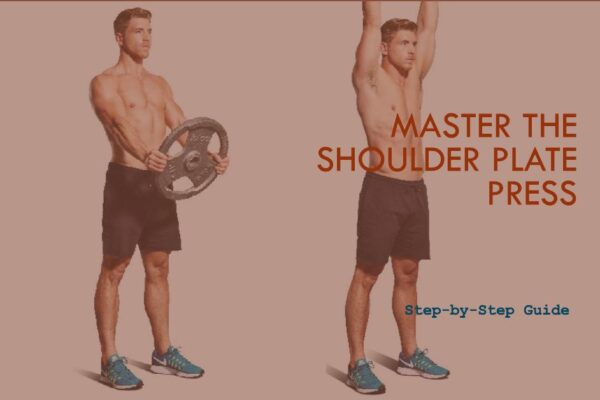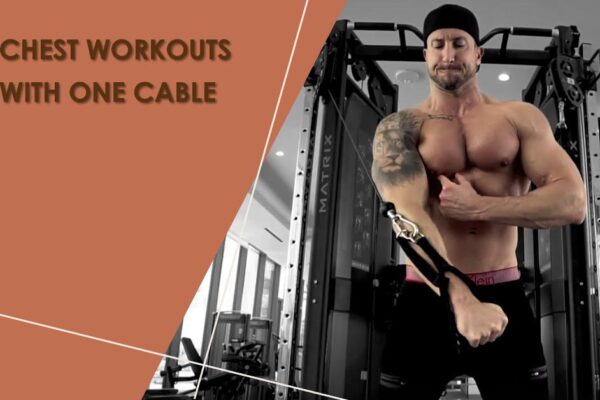The V-Bar Lat Pulldown is a popular exercise that targets the muscles of the back, particularly the latissimus dorsi (lats). It involves pulling a V-shaped bar attached to a cable machine towards your upper chest while seated. This exercise is a staple in many strength training and bodybuilding routines due to its ability to effectively isolate and strengthen the back muscles.
Whether you’re looking to build a strong and muscular back or improve your overall upper body strength, the V-Bar Lat Pulldown is an excellent choice. In this article, we will explore the benefits, proper techniques, and variations of this exercise to help you maximize your results. Get ready to unleash the power of your back and achieve a stronger physique with the V-Bar Lat Pulldown.
What is V-Bar Lat Pulldown?
The V-Bar Lat Pulldown is a variation of the lat pulldown exercise that specifically targets the muscles of the back, especially the latissimus dorsi (lats). It involves pulling a V-shaped bar attached to a cable machine towards your upper chest while seated. This exercise is highly effective for isolating and strengthening the back muscles.
The V-Bar Lat Pulldown is important because it targets the lats, strengthens the upper body, improves posture and stability, enhances functional movements, and offers adaptability in workouts.

Anatomy and Muscles Worked
The back muscles, including the trapezius, latissimus dorsi, rhomboids, erector spinae, and others, provide stability, strength, and mobility to the upper body. They assist in movements like shoulder elevation, scapular retraction, spine extension, and shoulder adduction. Training these muscles collectively improves back strength, stability, and posture.
Muscles Targeted by the V-Bar Lat Pulldown
- Primary muscles targeted:
- Latissimus Dorsi (Lats): The lats are the largest muscles in the back and play a key role in pulling movements. They give the back its width and contribute to overall upper body strength and stability.
- Secondary muscles targeted:
- Rhomboids: These muscles are located between the shoulder blades and assist in retracting and stabilizing the scapulae.
- Trapezius (Traps): The upper and middle fibers of the traps are activated during the V-Bar Lat Pulldown, aiding in scapular retraction and elevation.
- Posterior Deltoids: The rear portion of the shoulder muscles is recruited as stabilizers during the exercise.
- Biceps Brachii: The biceps act as synergists, assisting in elbow flexion during the downward phase of the movement.
- Brachialis: This muscle, located underneath the biceps, also assists in elbow flexion.
- Forearm Muscles: The muscles of the forearm, such as the brachioradialis and wrist flexors, are involved in gripping and holding the V-Bar handle.

It’s important to note that while the primary focus is on the lats, several other muscles in the upper body, including the chest, triceps, and various stabilizer muscles, are also engaged to support the movement and maintain proper form.
Also read: Close Grip vs Reverse Grip Lat Pulldown: A Biggest Mystery
Step-by-step guide
Proper technique is crucial when performing V-bar lat pulldown to ensure you’re getting the most out of the exercise and to avoid injury
A. Set-Up and Equipment Needed
To perform this exercise, you’ll need the following equipment:
- Find a lat pulldown machine with a V-bar attachment.
- Adjust the thigh pads and seat height to ensure proper alignment and comfort.
- Attach the V-bar to the cable of the lat pulldown machine.
B. Step-by-Step Guide
Here’s a detailed breakdown of how to execute the exercise correctly:
- Initial Position
- Stand in front of the lat pulldown machine, facing it.
- Grab the V-bar with an overhand grip, hands slightly wider than shoulder-width apart.
- Sit on the seat of the machine, keeping your feet flat on the ground.
- Position your thighs under the thigh pads for stability.
2. Execution of the Exercise:
- Relax your shoulders and engage your core muscles.
- Pull your shoulder blades down and back, creating a slight arch in your lower back.
- Take a deep breath in to prepare for the movement.
- Exhale and begin by pulling the V-bar down towards your upper chest.
- Keep your elbows close to your sides as you pull, focusing on engaging your lat muscles.
- Continue pulling until the V-bar is just above your chest or touches your upper chest.
- Hold the contracted position for a brief moment, squeezing your back muscles.
3. Breathing Tips
- Inhale as you slowly release the V-bar back to the starting position, maintaining control.
- Exhale during the exertion phase when pulling the V-bar down.
Remember to maintain proper form throughout the exercise. Avoid using momentum or swinging your body to complete the movement. Start with a weight that allows you to perform the exercise with good technique, and gradually increase the weight as you become stronger.
Note:
If you’re new to this exercise or have any concerns about your technique or physical condition, it’s always recommended to consult with a fitness professional.
V-Bar Lat Pulldown Benefits
The V-Bar Lat Pulldown exercise offers several benefits:
- Targets and strengthens the latissimus dorsi muscles, creating a V-shaped back appearance.
- Improves posture by strengthening the back muscles, supporting better spinal alignment.
- Engages multiple muscle groups, including the lats, biceps, rhomboids, and rear deltoids, for increased upper body strength and muscular endurance.
- Encourages optimal elbow positioning, maximizing lat activation when pulling the elbows from in front of the body.
- Targets various back muscles, such as the rhomboids and rear deltoids, for overall back development and a balanced physique.
- Enhances functional performance in daily activities and sports by improving stability, posture, and pulling movements.
Remember to consult with a fitness professional if you’re new to this exercise or have any concerns about your technique or physical condition.
V-Bar Lat Pulldown Variations
There are several variations of the V-Bar Lat Pulldown exercise that you can incorporate into your workout routine. Here are some common variations along with a brief description of each and instructions on how to perform them:
1. Wide-Grip V-Bar Lat Pulldown
This variation involves using a wider grip on the V-bar attachment to target the outer portion of the back muscles.
Technique and Execution:
- Sit at the lat pulldown machine with your thighs secured under the thigh pads.
- Grasp the V-bar with an overhand grip that is slightly wider than shoulder-width apart.
- Pull the V-bar down towards your upper chest while keeping your elbows pointing down and close to your body.
- Pause briefly at the bottom of the movement, then slowly return the V-bar to the starting position.
- Repeat for the desired number of repetitions.
2. Close-Grip V-Bar Lat Pulldown
In this variation, you use a narrow grip on the V-bar attachment, targeting the inner portion of the back muscles and emphasizing the biceps as well.
Proper Form and Execution:
- Sit at the lat pulldown machine with your thighs secured under the thigh pads.
- Grasp the V-bar with an underhand grip, placing your hands closer together.
- Pull the V-bar down towards your upper chest, focusing on squeezing your back muscles and keeping your elbows close to your body.
- Pause briefly at the bottom of the movement, then slowly return the V-bar to the starting position.
- Repeat for the desired number of repetitions.
3. Reverse-Grip V-Bar Lat Pulldown
This variation involves using an underhand grip on the V-bar attachment, targeting the lower portion of the lats and emphasizing the biceps.
Step-by-Step Guide
- Sit at the lat pulldown machine with your thighs secured under the thigh pads.
- Grasp the V-bar with an underhand grip, placing your hands shoulder-width apart or slightly wider.
- Pull the V-bar down towards your upper chest, focusing on squeezing your back muscles and keeping your elbows close to your body.
- Pause briefly at the bottom of the movement, then slowly return the V-bar to the starting position.
- Repeat for the desired number of repetitions.
How V-Bar Lat Pulldown differs from other pulldown Exercises
| Aspect | V-Bar Lat Pulldown | Close Grip Lat Pulldown | Wide Grip Lat Pulldown |
|---|---|---|---|
| Targeted Muscles | Latissimus dorsi muscles (lats) | Latissimus dorsi muscles (lats) | Upper back muscles, traps, rear delts |
| Range of Motion | Restricted range of motion | Neutral or supinated grip | Wider hand placement |
| Elbow Positioning | Elbows pulled in front of the body | Elbows pulled to the sides (laterally) | Elbows pulled to the sides (laterally) |
| Additional Engaged Muscles | Rhomboids and rear deltoids | Rhomboids and rear deltoids | More upper back muscles |
| Development Focus | V-shaped back, overall back development | Lats and biceps emphasis, overall back development | Upper back muscle development |
| Weighted Overload Potential | Yes | Yes | Yes |
| Posture Improvement | Yes | Yes | Yes |
| Carryover Benefits to Daily Activities | Yes | Yes | Yes |
Please note that while these aspects are generally true, individual variations in technique and execution may exist. It’s always recommended to consult with a fitness professional for proper form and technique.
Modifications for Beginners or for Specific Needs
If you’re a beginner looking to start with the V-Bar Lat Pulldown exercise, here’s a simple guide to help you get started:
- Adjust the machine: Sit on the lat pulldown machine and adjust the seat height so that your feet are flat on the floor and your thighs are positioned comfortably under the thigh pads.
- Grip placement: Attach the V-bar handle to the lat pulldown machine’s cable. Position yourself facing the machine and grab the V-bar handle with an overhand grip, making sure your palms are facing each other.
- Positioning: Sit upright with your chest lifted, shoulders back, and core engaged. Place your knees securely against the pads provided by the machine. This will help stabilize your body during the exercise.
- Starting position: With your arms fully extended, lean back slightly while maintaining an upright posture. Your upper body should be at a slight angle, around 10-15 degrees, from vertical.
- Execution: Inhale and initiate the movement by pulling the V-bar handle down towards your upper chest while squeezing your shoulder blades together. Focus on engaging your back muscles during this pulling motion.
- Elbow positioning: Keep your elbows pointing downwards throughout the exercise and avoid flaring them out to the sides. This helps maximize the activation of the targeted muscles.
- Controlled movement: As you exhale, slowly return the V-bar handle to the starting position, allowing your arms to fully extend. Avoid using momentum or swinging your body during the movement. Maintain control throughout the exercise.
- Repetitions and sets: Aim for 8-12 repetitions per set to begin with. Start with 2-3 sets and gradually increase as you become more comfortable and stronger.
- Rest and progress: Take a rest period of 1-2 minutes between sets. As you progress, you can gradually increase the weight load to continue challenging your muscles.
- Proper form and safety: Pay attention to your posture, keep your movements smooth and controlled, and avoid using excessive weight that compromises your form. If you have any concerns or questions, consult with a fitness professional for guidance.
Remember, it’s important to warm up before starting any exercise and listen to your body. Start with a weight that allows you to maintain proper form throughout the movement. As you become more experienced and confident, you can gradually increase the intensity and challenge of the exercise.
Tips to Maximize Results and Safety
Follow these tips to maximize results and ensure safety when performing V-bar lat pulldown:
- Maintain proper form: Sit upright with your chest lifted, shoulders back, and core engaged. Avoid rounding your back and keep your elbows pointing downwards.
- Focus on the mind-muscle connection: Concentrate on contracting your back muscles and visualize squeezing your shoulder blades together during the pulling motion.
- Use a full range of motion: Allow the V-bar handle to come down until it reaches your upper chest, just above your collarbone, to engage your back muscles effectively.
- Control the weight: Use a weight that allows you to maintain control and proper form throughout the exercise. Gradually increase the weight as you progress.
- Listen to your body: Pay attention to any pain or discomfort. If something doesn’t feel right, stop immediately and reassess your form. Consult with a fitness professional if needed.
By following these tips, you can optimize your results and maintain a safe workout routine.
Common Mistakes to Avoid
When performing the V-Bar Lat Pulldown exercise, it’s important to avoid these five common mistakes:
- Not pulling the bar low enough: Ensure that you bring the V-bar handle down until it reaches your upper chest, just above your collarbone. This ensures proper engagement of your back muscles.
- Neglecting the top portion of the exercise: Perform the full range of motion by extending your arms fully at the top of the movement. Avoid stopping short and not fully straightening your arms.
- Using incorrect grip: There is no one “magic” grip for everyone. Find a grip width that feels comfortable and allows you to engage your back muscles effectively.
- Using too much momentum: Avoid using excessive momentum or swinging your body to complete the exercise. Focus on controlled movements and prioritize muscle activation over the amount of weight lifted.
- Going too heavy: It’s important to choose a weight that allows you to maintain proper form and control throughout the exercise. Going too heavy can compromise your technique and increase the risk of injury.
By avoiding these common mistakes, you can maximize the benefits of the V-Bar Lat Pulldown exercise and reduce the risk of injury. Remember to always prioritize proper form and consult with a fitness professional if you have any concerns or questions.
Incorporating V-Bar Lat Pulldown into Your Workout Routine
When incorporating the Alternating Dumbbell Pullover into your workout routine, consider the following guidelines for when and how often to do them, as well as complementary exercises and workouts:
- Frequency: Aim to perform the Alternating Dumbbell Pullover exercise 1-2 times per week. This frequency allows for adequate muscle recovery while still providing sufficient stimulus for growth and development.
- Selection of exercises: The Alternating Dumbbell Pullover primarily targets the muscles in the back, including the latissimus dorsi (lats), rhomboids, and trapezius. To create a well-rounded back workout routine, consider including other exercises that target these muscles, such as bent-over rows, pull-ups, or seated cable rows.
- Placement in your workout: You can incorporate the Alternating Dumbbell Pullover either at the beginning of your workout as a compound movement to target the larger back muscles, or towards the end as an isolation exercise to further fatigue the targeted muscles.
- Sets and repetitions: Start with 3-4 sets of 8-12 repetitions per set. Adjust the weight accordingly to ensure you can maintain proper form and control throughout each repetition.
- Rest and recovery: Allow for proper rest and recovery between sets and workouts. Aim for 60-90 seconds of rest between sets, and at least 48 hours of recovery time before targeting the same muscle group again.
Remember to always prioritize proper form and technique during the Alternating Dumbbell Pullover and any other exercises. If you have any underlying medical conditions or concerns, consult with a fitness professional or healthcare provider before adding new exercises to your routine.
Frequent Question Answers
By addressing the following frequently asked questions, we hope to provide clarity and guidance on incorporating the V-Bar Lat pulldown into your fitness routine. Remember to listen to your body, start at an appropriate level, and gradually progress for optimal results.
| FAQ | Answer |
|---|---|
| What muscles does the V bar pulldown work? | The V bar pulldown primarily targets the latissimus dorsi (lats), along with other muscles in the back, such as the rhomboids and traps. |
| What is the difference between V bar lat pulldown and normal lat pulldown? | The main difference lies in the grip. V bar lat pulldown uses a V-shaped bar with a neutral grip, focusing on the lats. Normal lat pulldown typically uses a wider grip, targeting the upper back muscles more. |
| How to do a V bar pulldown? | 1. Sit on the pulldown machine. 2. Grasp the V-shaped bar with an overhand grip. 3. Pull the bar down towards your upper chest. 4. Return to the starting position and repeat. |
| What is the difference between V-bar lat pulldown and underhand pulldown? | V-bar lat pulldown uses a neutral grip, targeting the lats primarily. Underhand pulldown employs an underhand, supinated grip, emphasizing the biceps and lower lats more. |
| What is the V-shaped bar used for? | The V-shaped bar is primarily used for exercises like the V bar pulldown. It allows for a neutral grip, targeting specific muscle groups effectively. |
| What is the V bar used for? | The V bar is commonly used for exercises such as the V bar pulldown or row. It provides a variety of grip options and helps engage different muscles in the back. |
Conclusion
V-Bar Lat Pulldown is a game-changer when it comes to sculpting and strengthening your back muscles. By incorporating this exercise into your routine, you can unlock the potential for a well-defined V-tapered physique, enhanced upper body strength, improved posture, and increased pulling power
Embrace the burn, embrace the grind, and embrace the satisfaction that comes from pushing yourself further than you ever thought possible. Each repetition brings you closer to your goals and transforms not just your body, but your mindset as well. Remember, progress takes time and consistency. Stay motivated, stay focused, and celebrate every milestone along the way.






Leave a Reply